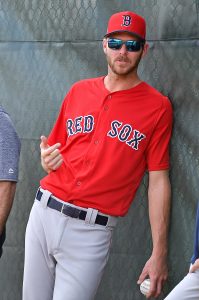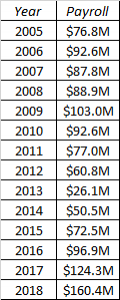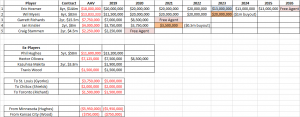March is just around the corner. If you hadn’t noticed, a fair number of notable players remain unsigned. The very top of MLBTR’s pre-winter top-fifty free agent list remains well-represented on the open market, with a smattering of other notable players also still unsigned. This represents a continuation of the surge of late signings observed last winter, which was the first offseason conducted under the current collective bargaining agreement.
It’s not hard to see that the market is functioning differently under the new CBA. Here’s a listing of the most notable players who’ve yet to sign this year, alongside the recent history of MLB contracts inked during the month of March:
2019
- Remaining candidates for MLB deals include Bryce Harper, Dallas Keuchel, Craig Kimbrel, Gio Gonzalez, Bud Norris, Adam Jones, Martin Maldonado, Ryan Madson, Clay Buchholz, Adam Warren, Tony Sipp, Denard Span, Logan Morrison, Evan Gattis, Matt Holliday, James Shields, Jim Johnson, Jorge De La Rosa, more
- Jake Arrieta — three years, $75MM
- Alex Cobb — four years, $57MM
- Greg Holland — one year, $14MM
- Lance Lynn — one year, $12MM
- Jonathan Lucroy — one year, $6.5MM
- Mike Moustakas — one year, $6.5MM
- Carlos Gonzalez — one year, $5MM
- Neil Walker — one year, $4MM
- Jon Jay — one year, $3MM
- Others: Peter Bourjos, Trevor Cahill, Ryan Flaherty, Yovani Gallardo, Justin Grimm, Dan Jennings, Wade LeBlanc, Ichiro Suzuki
- Derek Norris — one year, $1.2MM
- Others: Dillon Gee, Jared Hughes, Pete Kozma, Daniel Stumpf
- Pedro Alvarez — one year, $5.75MM
- Austin Jackson — one year, $5MM
- David Freese — one year, $3MM
- Alfredo Simon — one year, $2MM
- Franklin Morales — one year, $2MM
- Others: Ross Ohlendorf, Zach Phillips, Ruben Tejada, Carlos Torres







